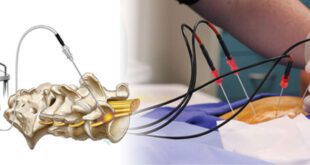By Dr. Mayrene Hernández, chief medical officer, UnitedHealthcare of Florida
 When health issues arise, people often have to decide where best to seek medical attention, with urgent care and the emergency room being potential destinations. But for more Floridians, their smartphone is now the preferred way to see and talk to a doctor.
When health issues arise, people often have to decide where best to seek medical attention, with urgent care and the emergency room being potential destinations. But for more Floridians, their smartphone is now the preferred way to see and talk to a doctor.
Telemedicine visits, or virtual care, typically last less than 20 minutes, often cost less than $50 and enable people to connect 24/7 with a health care provider via a smartphone, tablet or personal computer to help diagnose and treat certain medical conditions.* While nearly 40% of Americans said they are interested in using telemedicine in the future to access care,1 a separate J.D. Power survey found nationwide telehealth adoption is currently as low as 10%.
Closing this gap by expanding the use of virtual care may prove beneficial, as this technology can provide consumers improved convenience and lower costs. In fact, 68% of patients rated their telemedicine visit a “nine” or “10” on a 10-point satisfaction scale;2 74% had their care concern resolved during the first visit; and net savings per virtual visit exceeded $120.3
To help people take advantage of this emerging technology, consider:
Identify Available Resources: To find available telemedicine resources, check with your hospital or care provider group, health insurance plan or employer. In fact, nearly nine out of 10 employers are offering telemedicine to their employees,4 while 76% of U.S. hospitals already connect patients and care providers using video or other technology.5 For Medicare beneficiaries, some Medicare Advantage plans offer coverage for telemedicine and resources to access virtual care, in some cases at no out-of-pocket cost.
Understand Appropriate Uses: Telemedicine technology is most widely used to address minor and nonemergency medical conditions, including allergies, flu, pinkeye, and rashes. Telemedicine is also emerging as a helpful resource for behavioral health services, making it more convenient for people to access this type of care. If needed, doctors can prescribe medications and send prescriptions to local pharmacies for pickup. While people who experience a significant or serious medical issue should go to the emergency room (ER), it is important to recognize that about 25% of ER visits typically involve conditions that could appropriately be addressed with a virtual visit.6
Keep Your Primary Care Physician: It is important to maintain a relationship with a primary care physician for wellness checkups, diagnostics, management of long-term conditions and some urgent and non-urgent treatments. As telemedicine programs evolve, telemedicine may be one way to do that.
Other Connected Devices: Consumers can consider other connected devices to help access care and potentially improve their health, such as smartwatches, activity trackers, continuous blood glucose monitors and connected asthma inhalers. These devices – and others like them – may provide real-time information and offer actionable feedback about their behavior patterns, while helping make it possible for care providers to counsel patients to more effectively follow recommended treatments.
Making telemedicine more widely available – and used – may be especially important for people with chronic conditions and the 20% of the U.S. population that lives in rural areas where access to health care, particularly specialty care, is often lacking.7 By considering these tips, people may make the most of telemedicine resources as part of their journey toward managing their health.
UnitedHealthcare of Florida
* Additional out-of-pocket costs may be required for telemedicine services depending on the plan and any applicable state requirements.
References:
1. 2019 UnitedHealthcare Consumer Sentiment Survey of more than 1,000 Americans, https://newsroom.uhc.com/news-releases/
technology-comparison-shop.html
2. Massachusetts General Hospital, https://www.massgeneral.org/
about/pressrelease.aspx?id=2338
3. The American Journal of Emergency Medicine, https://www.ajemjournal.com/article/S0735-6757(18)30653-3/abstract
4. 2019 Mercer National Survey of Employer-Sponsored Health Plans, https://www.mercer.com/newsroom/mercer-survey-finds-us-employers-shifting-to-innovative-strategies-to-make-healthcare-more-affordable-for-more-employees.html
5. American Hospital Association, https://www.aha.org/system/files/2019-02/fact-sheet-telehealth-2-4-19.pdf
6. UnitedHealthcare data; Based on analysis of 2016 UnitedHealthcare ER claim volumes, where ER visits are low acuity and could be treated in a Virtual Visit, primary care physician or urgent/convenient care setting.
7. U.S. Census Bureau https://www.census.gov/library/stories/2017/08/rural-america.html
 Central Florida Health and Wellness Magazine Health and Wellness Articles of the Villages
Central Florida Health and Wellness Magazine Health and Wellness Articles of the Villages


